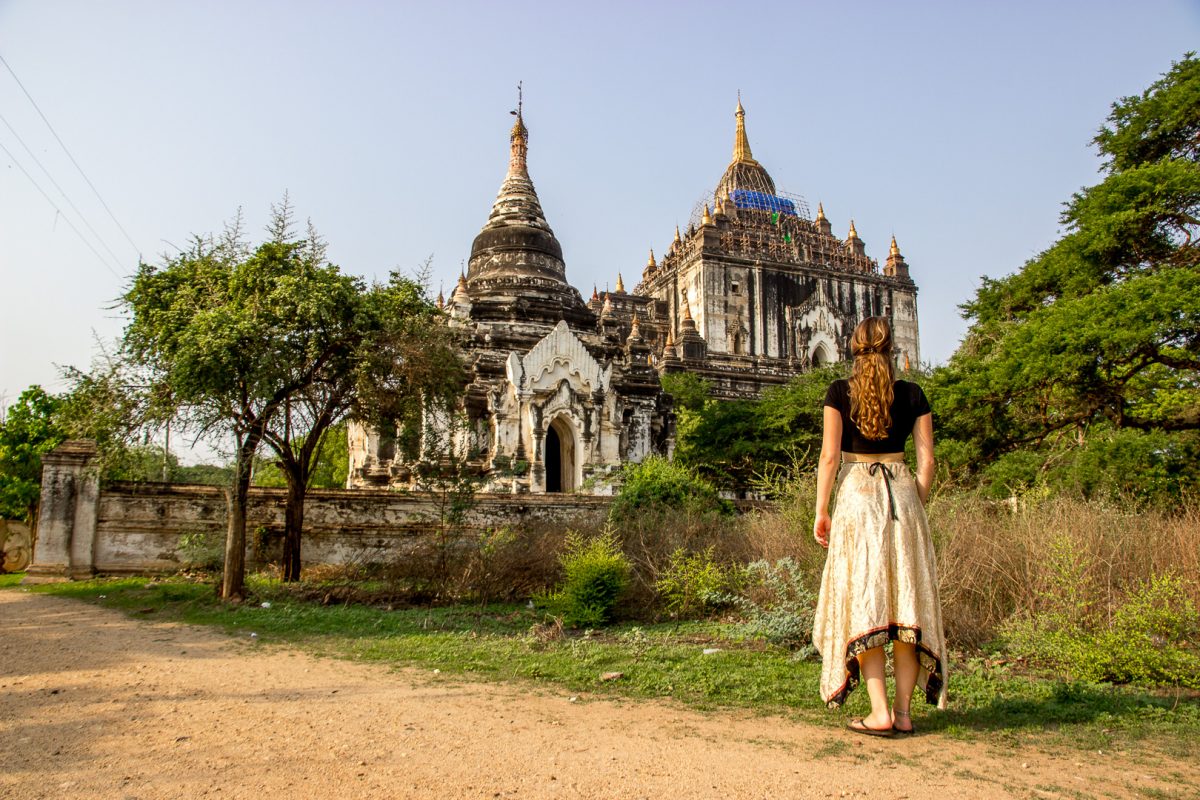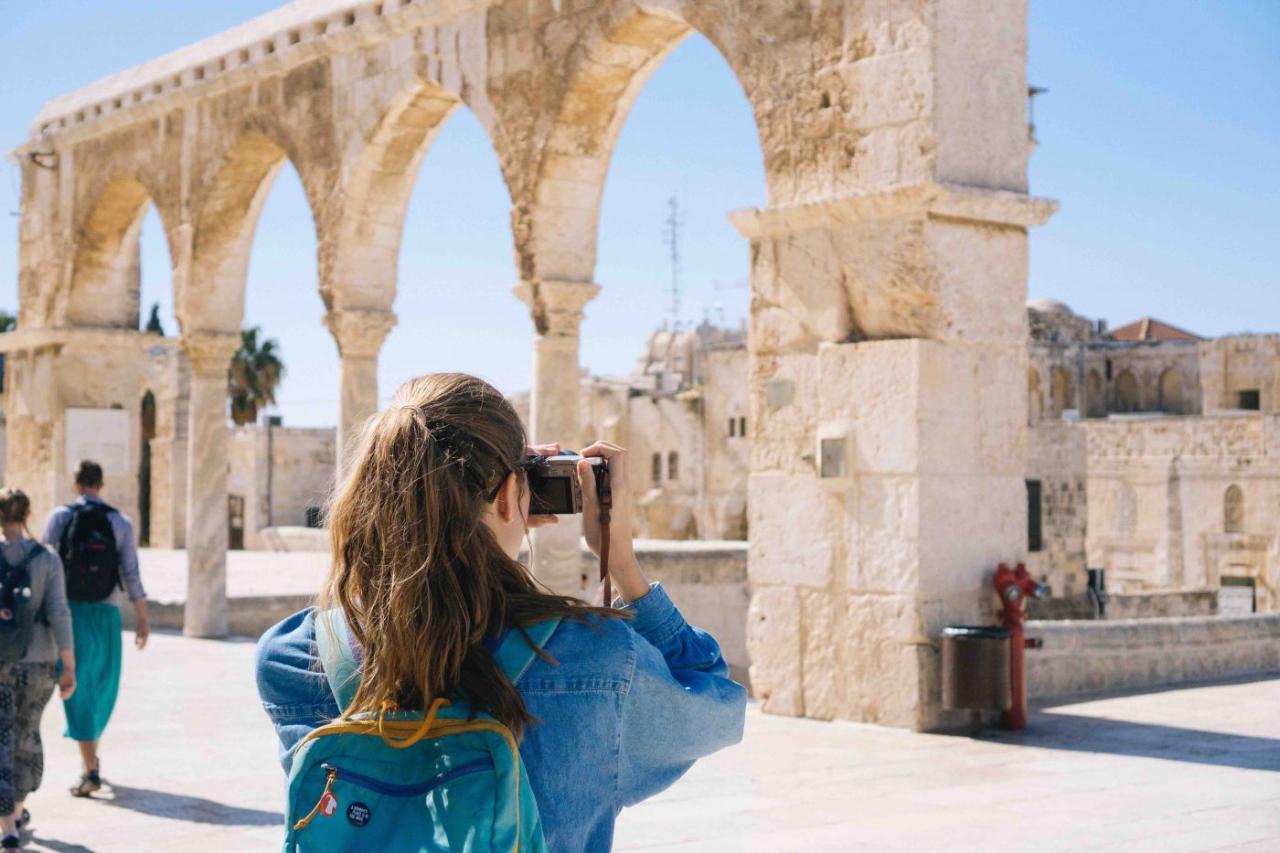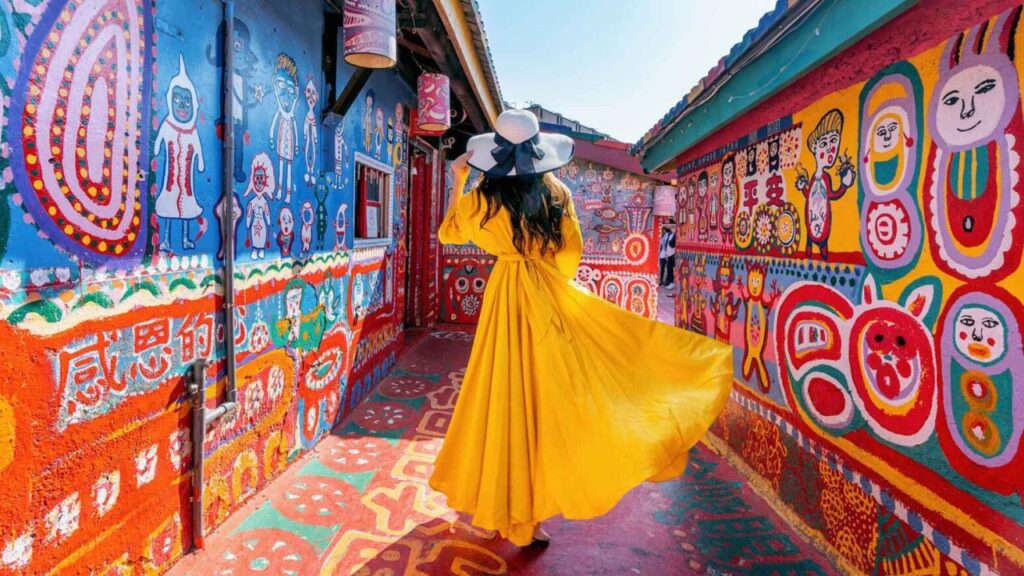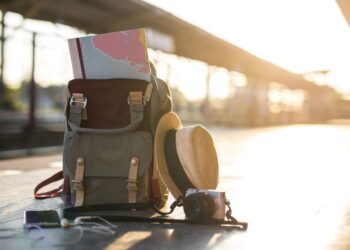Beyond the superficial gaze of a typical tourist lies a profound and transformative experience: Cultural Immersion. This is where travel evolves from observation to participation, allowing you to truly live like locals and unlock a deeper understanding of a destination’s soul. This comprehensive article will guide you through the art of authentic cultural immersion, exploring its immense benefits, providing meticulous strategies for planning and executing such journeys, and offering practical advice for respectfully integrating into local life. Prepare to transcend the role of a visitor and become a temporary member of a different world.
The Deep Appeal of Authenticity

Why is there a growing desire to move beyond mere sightseeing and engage more profoundly with local cultures? It’s a yearning for authentic connection, deeper understanding, and personal growth that goes beyond surface-level observation.
A. Unveiling True Understanding: Postcards and guidebooks offer a curated view; true immersion reveals the everyday realities, nuanced traditions, and unspoken rhythms of a culture. It allows you to grasp the “why” behind customs, fostering genuine comprehension rather than just observation.
B. Fostering Profound Empathy and Global Citizenship: Stepping into another culture’s shoes, even temporarily, builds immense empathy. You experience life from a different perspective, challenging your own assumptions and expanding your worldview, ultimately making you a more compassionate and informed global citizen.
C. Accelerating Language Acquisition: There’s no substitute for being surrounded by a language to truly learn it. Immersion forces you to practice, listen, and adapt, dramatically accelerating your linguistic abilities and opening doors to deeper communication.
D. Discovering Hidden Gems and Authentic Experiences: Locals possess invaluable knowledge of their area’s hidden treasures—the best street food stalls, secret parks, local festivals, or unadvertised workshops. Immersion grants you access to these authentic experiences that most tourists miss.
E. Enhancing Personal Growth and Adaptability: Navigating an unfamiliar cultural landscape, adapting to different social norms, and solving problems in new contexts pushes your comfort zone. This builds resilience, problem-solving skills, and a profound sense of self-reliance. You learn invaluable lessons about flexibility.
What Kind of Local Life Awaits You?
“Living like locals” is a broad concept. Defining the specific type and depth of cultural immersion you seek will help you tailor your experience for maximum impact.
A. Duration of Immersion: How long can you realistically dedicate to this experience?
1. Short-Term (1-3 weeks): Focus on a specific aspect, like an intensive language course, a culinary workshop, or a volunteering stint. You’ll get a taste of immersion.
2. Mid-Term (1-3 months): Allows for deeper engagement, more extensive language practice, or a significant volunteer project. You’ll start to feel truly integrated.
3. Long-Term (3+ months to a year or more): For truly transformative immersion. This could involve working abroad, studying a university program, or a long-term homestay. You’ll begin to think and act like a local.
B. Level of Immersion Desired: How deeply do you want to integrate?
1. Structured Learning: Language schools, cooking classes, artisan workshops, or university courses. Provides cultural context while having a formal learning structure.
2. Homestays: Living with a local family provides unparalleled insight into daily life, customs, and language practice within a supportive environment.
3. Volunteering/Working Abroad: Actively contributing to a local community or economy. This offers a practical, hands-on understanding of local challenges and successes.
4. Independent Living: Renting an apartment, shopping at local markets, and navigating daily life independently. This requires a higher degree of self-reliance and proactivity.
C. Focus of Immersion: What aspect of local life interests you most?
1. Linguistic Immersion: The primary goal is to become fluent in a new language. Every interaction becomes a learning opportunity.
2. Culinary Immersion: Exploring local foodways, from street food to traditional cooking techniques, and understanding the role of food in the culture.
3. Artistic/Craft Immersion: Learning a traditional art form, music, dance, or craft directly from local practitioners.
4. Community Development Immersion: Working with local NGOs or community groups to understand and contribute to social or environmental initiatives.
5. Spiritual/Philosophical Immersion: Delving into local spiritual practices, belief systems, or philosophical traditions.
D. Destination Choice Considerations:
1. Cultural Richness: Choose a destination with a distinct and vibrant culture that genuinely interests you.
2. Openness to Outsiders: Some cultures are more accustomed to and open to visitors seeking immersion than others. Research this.
3. Infrastructure for Immersion: Are there established language schools, volunteer organizations, or homestay programs?
4. Safety and Practicality: Ensure the destination is safe and has basic infrastructure to support your extended stay.
Strategic Planning for Authentic Engagement

Authentic cultural immersion doesn’t just happen; it’s a result of meticulous planning and a proactive mindset. This blueprint helps you prepare for a deeply rewarding experience.
A. Define Your Learning Objectives and Cultural Focus:
1. Specific Goals: Beyond “living like a local,” what specific knowledge, skills, or insights do you aim to gain? (e.g., “converse fluently in Spanish,” “understand Balinese traditional dance,” “learn the history of Japanese tea ceremony”).
2. Pre-Immersion Research: Dive deep into the history, customs, social etiquette, and current events of your chosen culture. This proactive learning enhances your ability to connect once there.
B. Linguistic Preparation: Language is the gateway to culture.
1. Basic Phrases: Learn essential greetings, polite expressions, and common phrases before you arrive. This shows respect and facilitates initial interactions.
2. Language Learning Apps/Courses: Utilize resources like Duolingo, Babbel, or online tutors to build a foundation.
3. Focus on Listening: Train your ear to the rhythm and intonation of the language.
C. Financial Planning for Extended Stays: Immersion often requires longer-term budgeting.
1. Detailed Budget: Beyond standard travel costs, factor in language school fees, long-term accommodation (homestay, apartment rental), local transportation, visa fees, health insurance, and a generous contingency fund (25-30% for unforeseen costs).
2. Local Currency and Banking: Understand local banking systems, ATM accessibility, and common payment methods. Consider opening a local bank account for long-term stays if feasible.
3. Income Opportunities (if applicable): If planning to work, research visa requirements, local job markets, and expected wages.
D. Visa and Legal Requirements: This is crucial for longer stays.
1. Research Visa Types: Understand the specific visa required for your purpose (e.g., student visa, volunteer visa, work permit).
2. Application Process: Start the application process well in advance, as it can be lengthy and require extensive documentation.
3. Local Laws: Familiarize yourself with local laws and regulations, especially those that might differ significantly from your home country.
E. Health, Safety, and Insurance for Immersion: Your well-being in an unfamiliar environment is paramount.
1. Medical Consultation: Visit your doctor for necessary vaccinations and preventative medications. Discuss managing chronic conditions abroad.
2. Comprehensive Travel Insurance: Essential for cultural immersion. Ensure robust coverage for medical emergencies, emergency evacuation, trip interruption, and liability. Read the fine print carefully, especially regarding pre-existing conditions or specific activities.
3. Emergency Plan: Know local emergency numbers. Identify your embassy/consulate. Share your detailed itinerary with trusted contacts back home.
4. Local Safety Awareness: Research safe neighborhoods, common scams, and how to navigate public spaces respectfully and securely.
F. Accommodation Choices for Immersion: Beyond hotels.
1. Homestays: Offer the deepest cultural and linguistic immersion. Research reputable programs or direct contacts.
2. Local Apartment Rentals: For independent living, choose a non-touristy neighborhood. This allows you to experience daily local life (grocery shopping, public transport).
3. Volunteer Accommodation: If volunteering, accommodation might be provided, offering community living.
Living the Local Life
Once you arrive, the true art of cultural immersion begins. It’s about opening yourself up to the experience, even its challenges.
A. Cultivate a Mindset of Humility and Openness:
1. Be a Learner, Not a Critic: Approach everything with curiosity and a willingness to understand, rather than judging by your own cultural standards.
2. Embrace Discomfort: There will be moments of confusion, frustration, or culture shock. Lean into them; they are part of the learning process.
3. Practice Patience: Things may operate at a different pace or with different logic. Accept these differences gracefully.
B. Actively Seek Local Interaction: Don’t wait for it to come to you.
1. Engage in Daily Life: Shop at local markets, use public transport, frequent neighborhood cafes. These provide organic opportunities for interaction.
2. Participate in Local Activities: Join a community class, volunteer for a local event, or participate in a local sport.
3. Initiate Conversations: Start with your basic phrases. Ask questions about local life, customs, or food. Smile often.
C. Embrace Local Customs and Lifestyle:
1. Eat Local Food: Be adventurous with local cuisine, including street food (from reputable vendors). This is a powerful cultural gateway.
2. Adopt Local Rhythms: Adjust your schedule to local meal times, siestas, or work hours.
3. Dress Appropriately: Respect local dress codes, especially when visiting religious sites or in more conservative areas.
4. Learn from Observation: Watch how locals interact, how they conduct transactions, and how they navigate daily challenges.
D. Mindful Presence and Observation:
1. Minimize Digital Distractions: Limit screen time to truly be present in your environment and engage with people.
2. Keep a Journal: Document not just what you see, but what you feel, what you learn, and how your perspectives are shifting.
3. Engage All Senses: Pay attention to the distinct sounds, smells, tastes, and textures of your immersive environment.
E. Be Resourceful and Independent:
1. Problem-Solve Locally: When challenges arise, try to find local solutions before resorting to external resources. This builds self-reliance.
2. Navigate Independently: Rely on public transport, walking, or cycling as much as possible to explore your surroundings.
Overcoming Challenges in Cultural Immersion
Cultural immersion, while rewarding, is not without its difficulties. Overcoming these challenges is crucial for deeper understanding and personal growth.
A. Culture Shock and Frustration:
1. Acknowledge and Validate: It’s normal to feel overwhelmed, frustrated, or homesick. Don’t fight these feelings.
2. Seek Support: Talk to your host family, language school staff, or a trusted friend back home.
3. Take a Break: Step back from intense immersion for a day or two to recharge, perhaps by finding a familiar comfort (e.g., a foreign movie, a call home).
B. Language Barriers and Communication Breakdowns:
1. Patience and Persistence: Don’t get discouraged. Keep trying to communicate, even with mistakes.
2. Use Tools: Rely on translation apps, phrasebooks, or gestures as aids.
3. Embrace Mistakes: Locals often appreciate the effort and are usually willing to help. Laughter can bridge gaps.
C. Navigating Unfamiliar Social Norms and Etiquette:
1. Observe and Learn: Pay close attention to how locals behave in various situations.
2. Ask Questions: Don’t be afraid to politely ask for clarification if you’re unsure about a custom.
3. Apologize Gracefully: If you inadvertently commit a social faux pas, a sincere apology (even in broken language) is usually appreciated.
D. Dealing with Homesickness and Loneliness:
1. Stay Connected (Moderately): Regular, but not excessive, communication with loved ones can help.
2. Seek Community: Actively seek out local groups, classes, or fellow travelers who share your interests.
3. Focus on Your Purpose: Remind yourself of your goals for the immersion and the unique experiences you’re gaining.
E. Ethical Dilemmas and Responsible Engagement:
1. Cultural Sensitivity: Be aware of how your presence impacts the local community. Avoid contributing to exploitation or perpetuating stereotypes.
2. Sustainable Practices: Support local businesses, minimize waste, and respect the environment.
3. Ask for Permission: Always ask before taking photos of people, especially in sensitive cultural contexts.
Sustaining the Immersion and Its Wisdom
The true value of cultural immersion is not just in the experience itself, but in how it transforms you and how you integrate those learnings into your life.
A. Deep Reflection and Integration: Give yourself ample time to process your profound experience.
1. Journal Review: Re-read your journals, reflecting on your initial expectations versus your actual discoveries, and the personal changes you’ve undergone.
2. Synthesize Insights: How has your understanding of the world, your own culture, and yourself shifted? Identify key lessons.
3. Share Your Story (Thoughtfully): Articulate your experiences with trusted friends, family, or relevant communities. Focus on the nuances, challenges, and personal growth, not just the highlights.
B. Apply New Knowledge and Skills to Daily Life: Don’t let your immersion fade into a distant memory.
1. Maintain Language Skills: Continue practicing the language through conversation, media, or language exchange groups.
2. Integrate Cultural Practices: Adopt new cooking techniques, incorporate mindfulness practices, or adjust your communication style based on what you learned.
3. Broaden Your Worldview: Let your heightened empathy and understanding of diverse cultures inform your daily interactions and opinions on global issues.
C. Manage Re-Entry and Reverse Culture Shock: Returning home can be disorienting after deep immersion.
1. Patience and Self-Compassion: You’ve changed, and your home environment might feel different or even challenging. This is normal.
2. Gradual Reconnection: Ease back into your routine. Don’t feel pressured to immediately explain everything or engage in overwhelming social events.
3. Find Local Connections: Seek out local communities or groups that have ties to the culture you immersed in, or connect with other returned travelers.
D. Inspire Others and Advocate for Responsible Engagement:
1. Share Your Journey: Your authentic stories can inspire others to seek deeper travel experiences.
2. Educate and Inform: Offer advice on responsible travel, cultural sensitivity, and the benefits of true immersion.
3. Support Causes: If your immersion highlighted specific social or environmental needs, consider continuing to support relevant organizations.
E. Fuel Your Next Immersion Experience: The more you immerse, the more you realize there is to explore.
1. Maintain a “Cultural Exploration List”: Keep a running list of other cultures, languages, or skills you wish to immerse yourself in.
2. Leverage New Confidence: Use the resilience and self-awareness gained to plan even more ambitious and profound immersion journeys.
3. Embrace Lifelong Learning: Recognize that cultural immersion is a continuous journey of discovery, enriching every aspect of your life.
Conclusion
Cultural Immersion is not just a trend; it’s an essential pathway to a richer, more empathetic, and deeply fulfilling life. By daring to live like locals, you move beyond the tourist’s gaze and unlock a profound understanding of the world’s incredible diversity. This journey challenges, inspires, and transforms you, leaving you with invaluable skills, expanded perspectives, and a heart full of authentic memories. So, pack your bags, open your mind, and step boldly into a new way of seeing, feeling, and being. The vibrant tapestry of local life is waiting for you to become a part of it. What culture will you immerse yourself in next?







